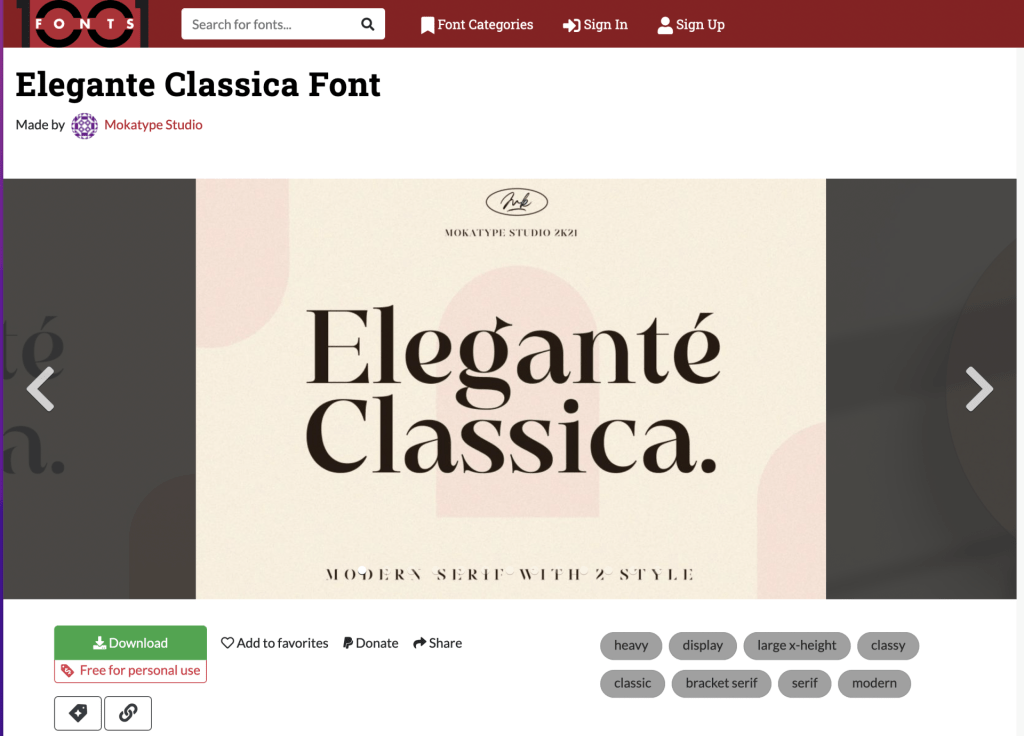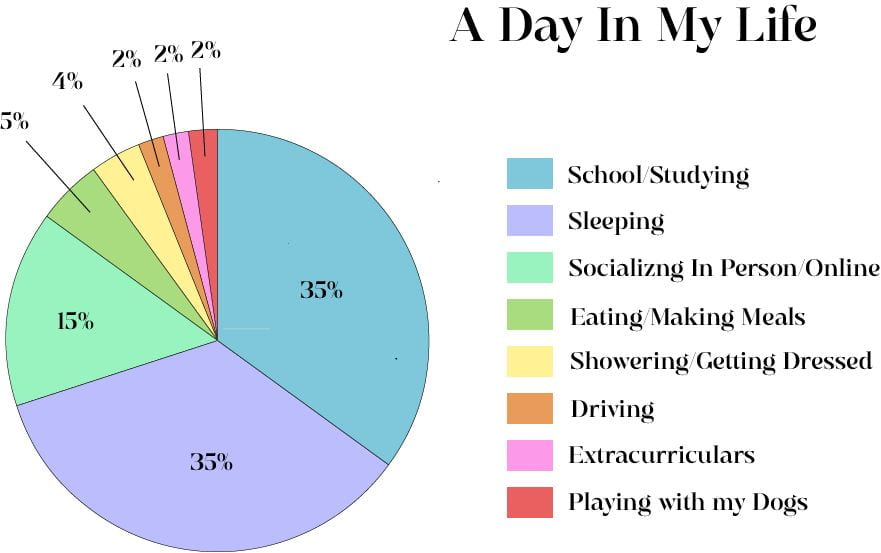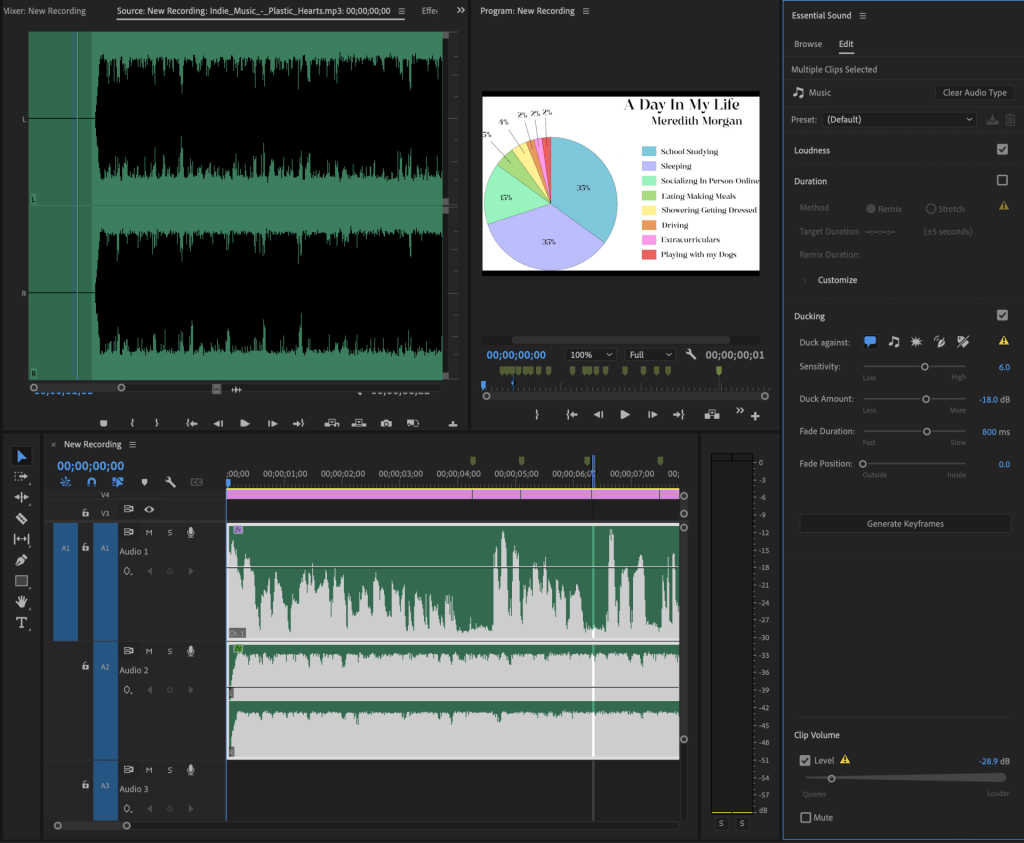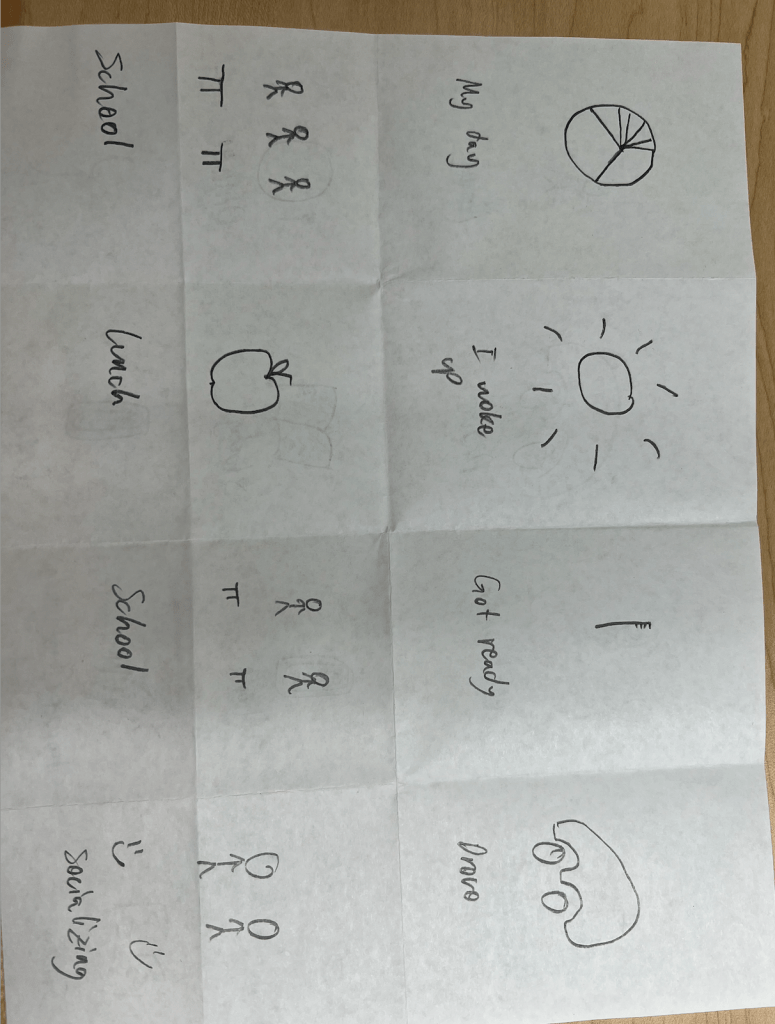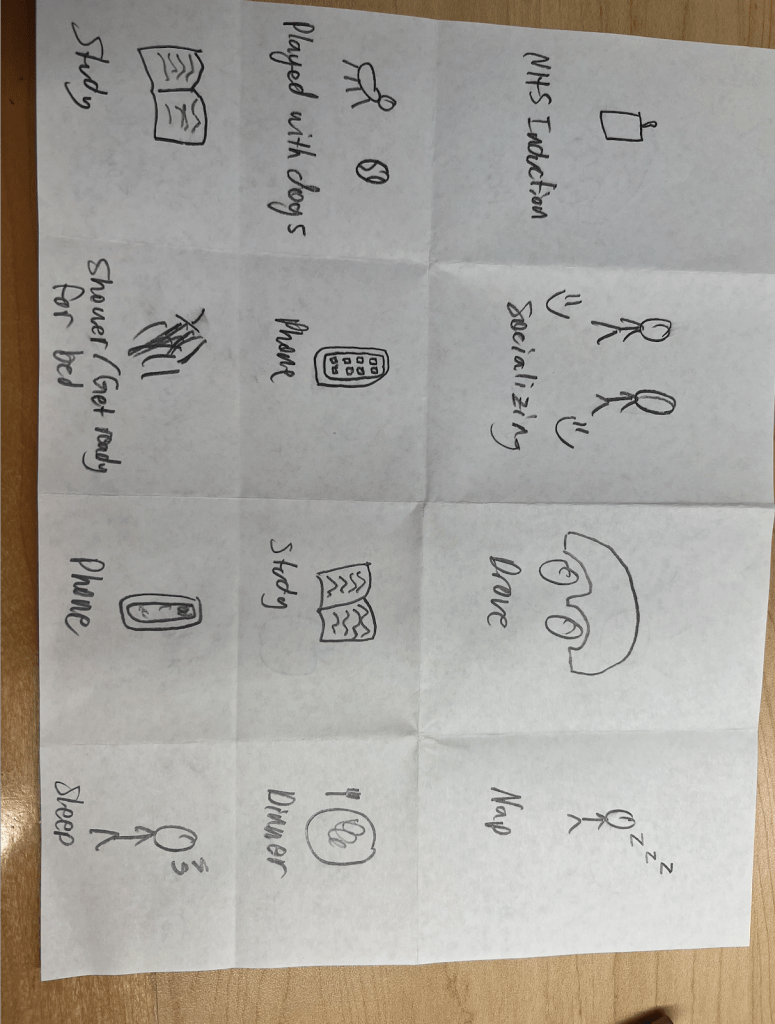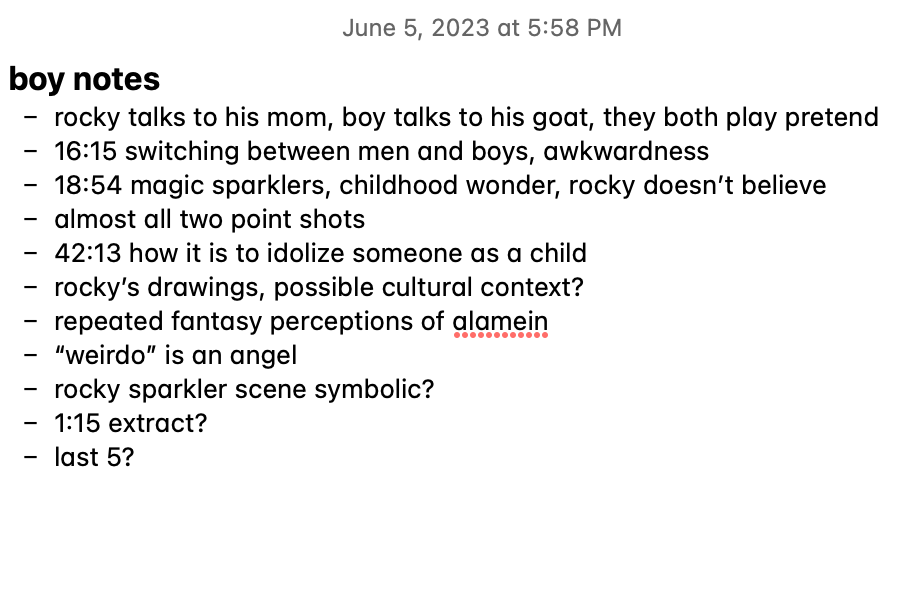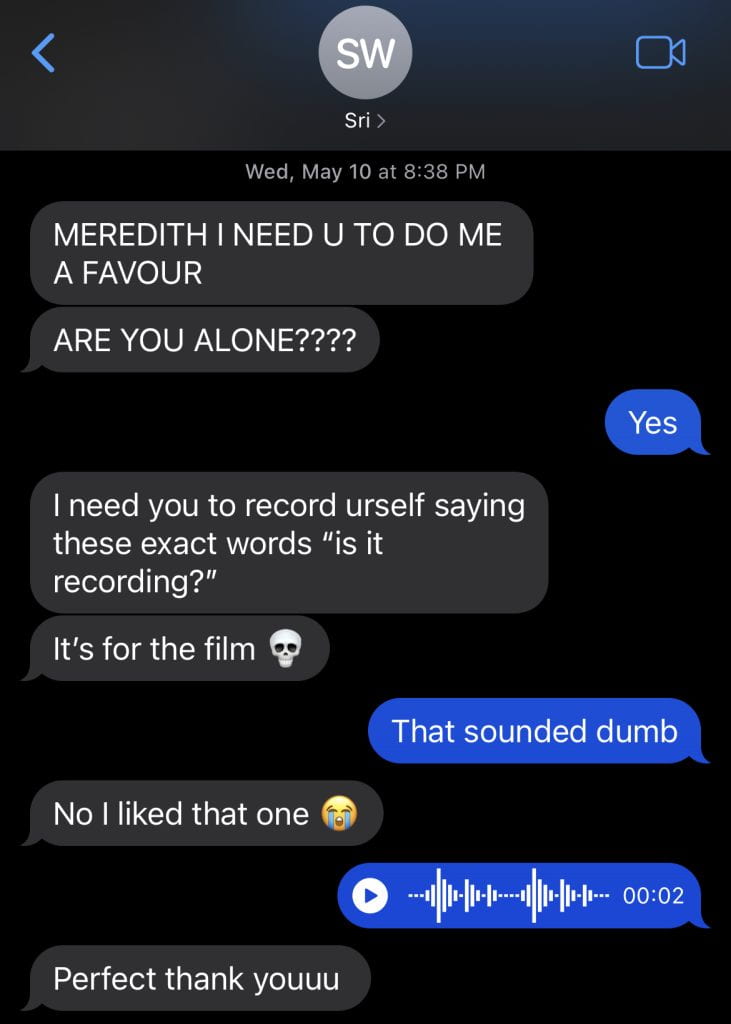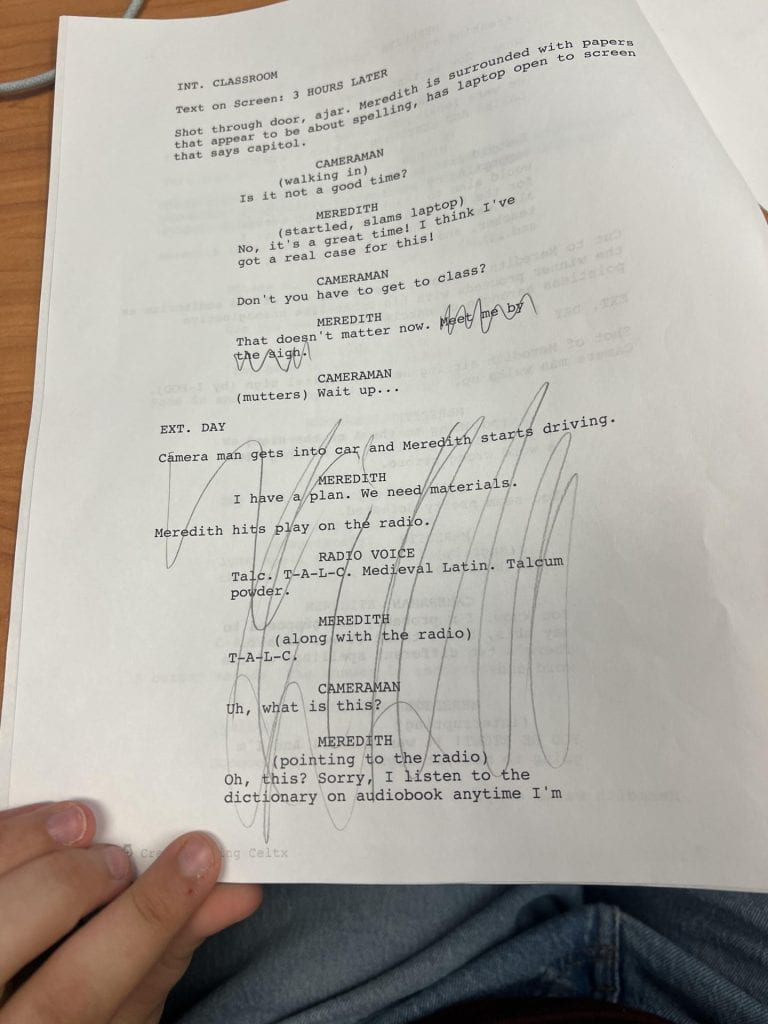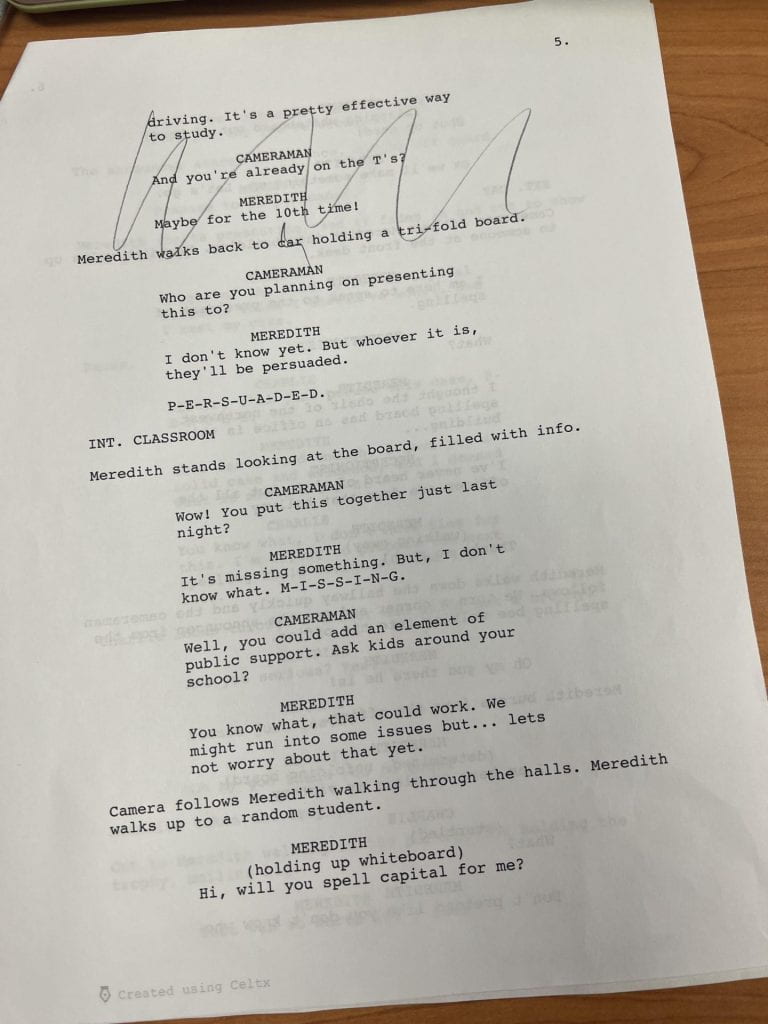Summary
Brainstorm with the team regarding IDEAS, GENRE, CONCEPTS, and GROUP INTENTIONS
| Ideas | Influence from breakfast club, informed by our school experiences |
| Genre | Coming of age |
| Concept | An unlikely group bonded by a common goal |
| Group Intentions | Create a product we can be proud of, and will leave an impact on the viewers |
Collaborate with the director on the VISION or CONCEPT behind the film and use this as a guiding point for all decisions
The director and I have discussed the vision and concept together and agreed that we want the film to have a strong coming-of-age theme and a through-line of a group coming together under unique circumstances.
Drafts of Script
Characterization Development
| Teacher | Authority figure, stable, bland |
| Rebel | Contrarian, agent of chaos, ends sympathetic |
| Jock | Egotistical, but good at teamwork, pep talk brings people together |
| Popular Girl | Uptight, turns out to be kind |
| Nerd | Eager, helpful in the search |
| Goth | Cynical, ends up cracking mystery |
Influences from Films
- Life Problem
- Conflict with high-stakes
- Relatable obstacles part of the human condition
- Provide sympathy, make the audience care
- The Wrong Way
- Incorrect way to handle problem
- Acceptance
- Climax
- Actual solution
| Showcases people overcoming the stereotypes and labels placed on them. |
| Archetypes: The original version from which copies are made, characters, situations, or settings |
| The Initiation: Growth into adulthood |
| Setting: The small town |
| Characters Fender: Bully Claire: Damsel in Distress Andrew: Hero Allison: Outcast Brian: Dreamer |
| Archetypes must deviate to subvert audience expectations. |
| Characters reject the task from their teacher and help each other grow. |
| Archetype = Starting point, Stereotype = Ending point |
| Works of fiction are not designed for realism, they tell stories and make points. |
| Unlearning stereotypes is important. |
- Prison Camp
- Characters captive
- Ruled by authoritarian figure, ridicule him
- Brutalist architechture of school
- Library
- Symbolic piece of art in library, human transformation
- Library goes from a prison, to a playground
- Freeze Frame
- Symbolizes freedom
- Honor “lower class” characters
5 Archetypes:
- Leader
- Most generically hero
- Structural center
- Relationships with all other
- One of the first members
- Least likely to have a specialized ability
- Conforms the least to trope
- Balanced, strong fighter, can rally troops
- Lancer
- Foil for the leader
- Characterization based on leader’s characterization, opposites
- Complicated relationship with the leader, jealousy, and/or respect
- Often an audience favorite, more complex and can be more realistic
- Heart
- Usually a girl
- The emotional center of the team
- Often a love interest of the leader/lancer
- Keeps everyone else grounded
- Most emotional and passionate, instincts can drive a group to intervene
- Kind and compassionate, not always nice
- Big Guy
- Bigger physically or metaphorically
- Character largely undefined
- Can be gentle giants, loyal, good friends
- Can be given a random/quirky trait
- Smart Guy
- Puts together plans
- Not as good at fighting, but is usually able to avoid it
- Can translate intelligence for the leader
- If a girl is usually a tomboy and less attractive
- Most likely to be given a disability
- Other archetypes
- Sixth ranger
- Tagalong kid
- Mentor character
- Hybridized tropes in roles
Origin:
- Mahabharata
- Leadership/smart guy, lancer/overall powerhouse, big guy, support, sixth ranger, heart
- Journey to the West
- Missing smart guy
- 5 elements in Chinese Mythology, can correspond with tropes
- Metal, big guy
- Wood, most frequently dropped
- Earth, big guy
- Water, smart guy
- Fire, lancer, leader
Pitch
Treatment
Working Title: “The myth of the Sycophant”
A rag-tag group of students are brought together in a group project where they have to work together to complete their assignment.
Modern high school, classic character archetypes but newer styles, goth/branded sportswear/Stanley cups.
Costume / Props that Help Characterization
Characters are dressed like their stereotype.





